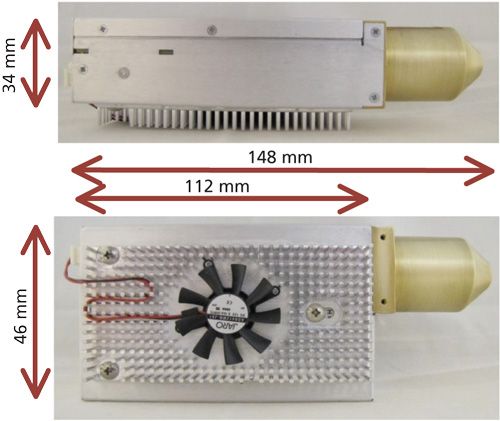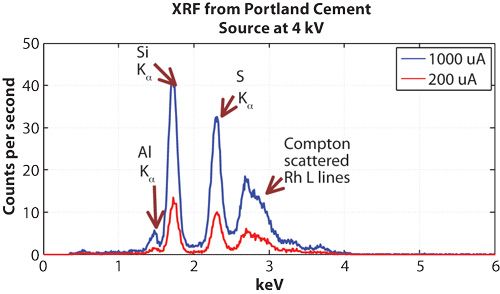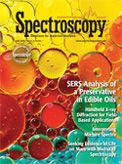Miniature 60 kV, 1000 μA 12 W X-ray Source
Spectroscopy
Moxtek’s MAGPRO miniature X-ray source is capable of up to 60 kV 200 μA and down to 4 kV and 1000 μA, and limited to an output power of 12 W. The 12 W source is meant for use in small benchtop systems where small size is valued.
The 12 W miniature source has a higher voltage and a much higher emission current then our present miniature X-ray sources, which is an advantage for a number of applications. The initial release of the 12 W source, our MXDPP-50 electronics, come in two versions: the tungsten anode version which can be used in either XRF or in X-ray imaging, and the Rh anode version primarily meant for light element XRF detection (Figure 1). The entire X-ray source (tube plus high voltage power supply) weights about 700 g (25.0 oz) and can be controlled by your choice of USB, digital, or analog control. It also has an interlock connection for X-ray safety.

We will show the advantage of the rhodium anode source running at 4 kV 1000 μA for XRF of cement powders.
Experimental Conditions and Results for XRF Detection of Cement Powers
Concentrations of sulfur (sulfate), silicon (silicon dioxide), and aluminum (aluminum oxide) are important for both identifying and controlling different blends of cement powder. XRF can be used to measure cement powder elemental concentrations. XRF for the desired “light” elements, with emission lines under about 4 keV is challenging because the characteristic X-rays are absorbed by air, thereby attenuating the signal from the sample. For this experiment, we used a typical XRF setup where the sample is placed at 45° to the tube, and 135° to the detector, and no filters on the 12 W X-ray source.
For light element XRF, a rhodium anode is often used because it has L emission lines between 2.7 and 3.0 keV, which are used to excite elements with emission lines below 2.5 keV. For this test, the 12 W X-ray source was set to the minimum of 4 kV, which is helpful in eliminating the calcium XRF signal from the cement. The calcium signal is unwanted in this application because it will overwhelm the detection of the other elements of interest. A high emission current X-ray source, such as 1000 μA from the 12 W source, is very helpful in increasing the signal.
Figure 2 shows an XRF spectrum from a Portland cement sample with the 12 W source running at 1000 μA and 200 μA on a rhodium anode tube. The signal level is increased by a bit over fivefold for these light elements, which can be a huge advantage in any application which detection of light elements is needed.

Conclusions
The new 12 W source is meant for use in small benchtop systems where small size is valued. It has as increased range up to 60 kV at high voltage and increased current to 1000 μA at low voltages; both of which are an advantage in XRF and imaging applications.

Moxtek, Inc.
452 West 1260 North, Orem, UT 84057
tel. (800) 758-3110
Website: www.moxtek.com
